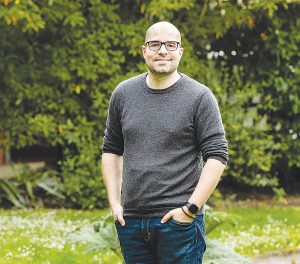
Scenarios analysed for yearling dairy-beef steers include emissions from animal production, input generation, transportation and background processes.
A new study from AgResearch has found that farming dairy-beef cattle could provide reductions in greenhouse gas emissions of up to 48%.
The Life Cycle Assessment analysis showed using fast-finishing systems with dairy-beef animals results in a carbon footprint that is 32-48% lower than the average for traditional beef systems in New Zealand.
The work by AgResearch scientists was supported by the Bioresource Processing Alliance and in partnership with organisations such as Fonterra and Alps 2 Ocean Foods.
Farm data from the beef and dairy industries was used in the analysis, which was based on kilograms of carbon dioxide equivalent emissions per kilogram of finished liveweight of the animals.
Scenarios were analysed for dairy-beef steers processed between 10 and 18 months of age and include emissions from animal production, input generation, transportation, and background processes.
“There are many issues at play in determining those emissions and the differences between the dairy and beef animals,” AgResearch senior scientist Andre Mazzetto said.
“These include how emissions are allocated between milk and liveweight, and issues such as growth rates, feed efficiency and the finishing period/time to slaughter of the animals.”
It pointed to tangible ways that farmers can reduce the carbon footprint of their beef herds.
“Emissions reductions can be achieved simply by integrating dairy-beef animals into the herd, but the scope of this reduction can be significantly increased with fast-finishing beef systems. There would be few tools or management strategies available which can have such significant climate impact.”
Dairy farm emissions data used in the study were sourced from the International Dairy Federation and 85% of these emissions are allocated to milk production and the remainder to meat production.
That 15% gives dairy beef cattle one advantage, the other advantage is that after 18 months, the animal’s growth slows and more of its energy goes to maintenance, he said.
“There’s a point in the animal where it grows more slowly so there’s more emissions from maintaining it and they’re not growing too much weight.
“What the study is saying is that there is a sweet spot where you can finish the animal where the growth rate is still high and you can save emissions as well, instead of keeping the animal for a long time and it’s not growing too much.”
The faster the animal is finished, the lower the footprint, he said.
Sourcing calves from the dairy industry presents an opportunity for the beef industry to significantly reduce its emissions, as well as a providing an alternative use for calves from the dairy industry, he said.
Fonterra’s director of sustainability Charlotte Rutherford said Fonterra’s focus in this space is on creating more options for dairy-beef calves.
“We see the opportunity to integrate these calves into the red meat sector as a major opportunity for NZ ag. These results show that with the right genetics, care and farming systems, dairy-beef animals offer the opportunity to reduce carbon emissions, contributing to the long-term sustainability of our industry.”
You can now read the most important #news on #eDairyNews #Whatsapp channels!!!
🇺🇸 eDairy News INGLÊS: https://whatsapp.com/channel/0029VaKsjzGDTkJyIN6hcP1K























